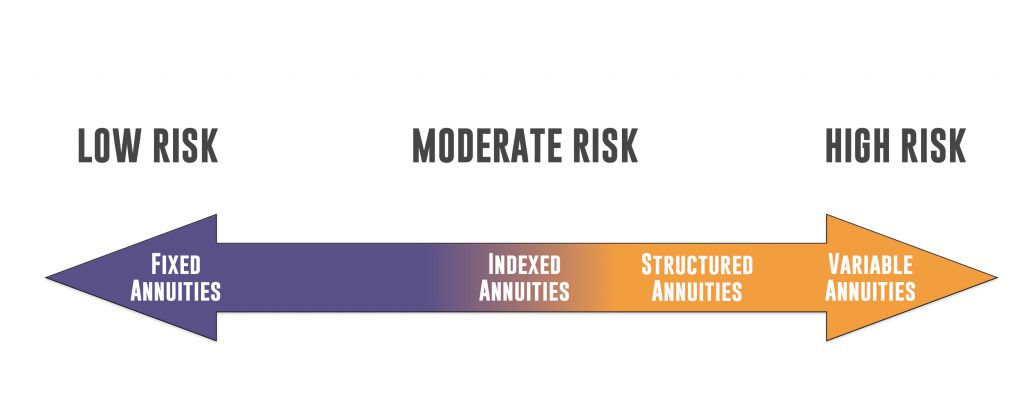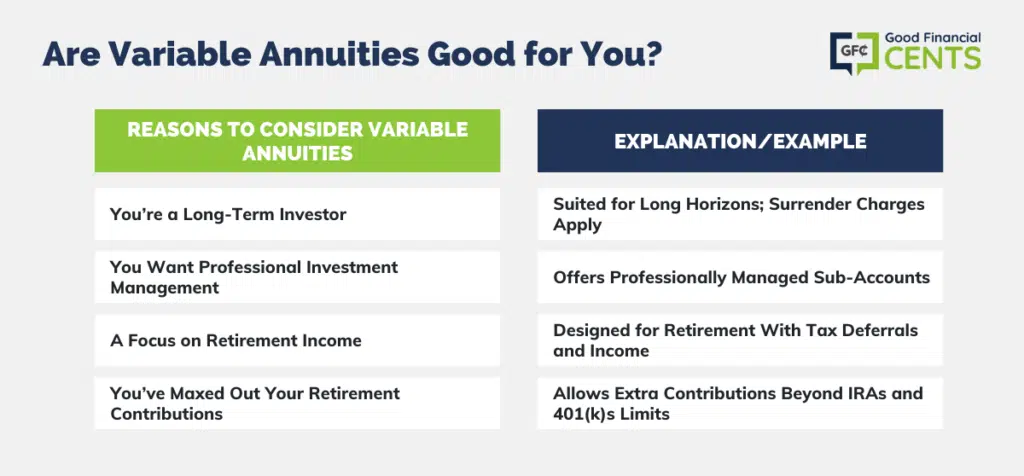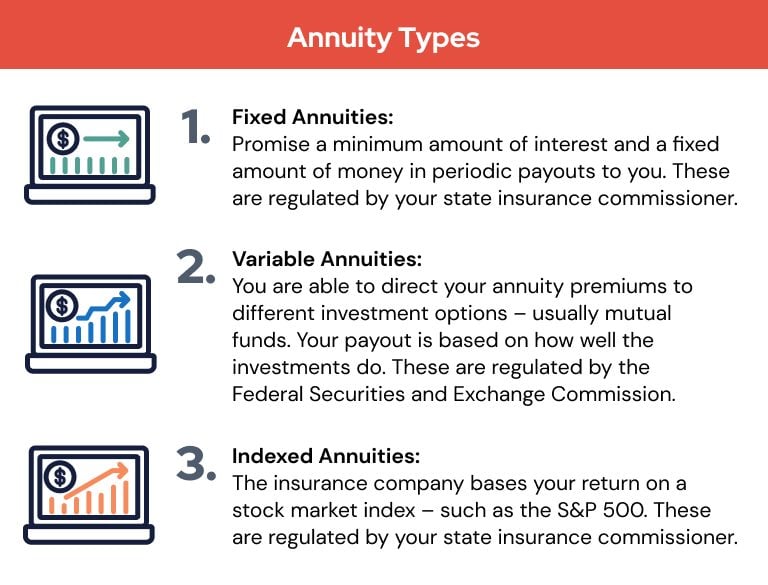All Categories
Featured
Table of Contents
Equally as with a taken care of annuity, the owner of a variable annuity pays an insurance company a swelling amount or series of repayments for the pledge of a series of future settlements in return. As discussed above, while a dealt with annuity grows at an assured, continuous rate, a variable annuity expands at a variable rate that depends upon the performance of the underlying investments, called sub-accounts.

During the buildup stage, possessions purchased variable annuity sub-accounts expand on a tax-deferred basis and are strained only when the agreement proprietor withdraws those incomes from the account. After the accumulation phase comes the earnings stage. Gradually, variable annuity possessions must theoretically increase in worth up until the contract proprietor chooses he or she want to start withdrawing cash from the account.
The most significant issue that variable annuities usually existing is high cost. Variable annuities have a number of layers of charges and costs that can, in accumulation, create a drag of up to 3-4% of the contract's worth each year.
Understanding Fixed Income Annuity Vs Variable Annuity Key Insights on Your Financial Future Defining Variable Vs Fixed Annuities Benefits of Deferred Annuity Vs Variable Annuity Why Choosing the Right Financial Strategy Is Worth Considering How to Compare Different Investment Plans: How It Works Key Differences Between Different Financial Strategies Understanding the Risks of Long-Term Investments Who Should Consider Strategic Financial Planning? Tips for Choosing the Best Investment Strategy FAQs About Fixed Annuity Or Variable Annuity Common Mistakes to Avoid When Planning Your Retirement Financial Planning Simplified: Understanding Your Options A Beginner’s Guide to Smart Investment Decisions A Closer Look at Fixed Income Annuity Vs Variable Growth Annuity
M&E expenditure fees are computed as a portion of the contract worth Annuity companies hand down recordkeeping and various other administrative costs to the contract proprietor. This can be in the type of a flat annual charge or a portion of the contract value. Management costs might be included as component of the M&E risk fee or may be assessed individually.
These costs can vary from 0.1% for easy funds to 1.5% or more for actively handled funds. Annuity agreements can be customized in a number of ways to offer the details demands of the agreement proprietor. Some common variable annuity motorcyclists include guaranteed minimal build-up advantage (GMAB), ensured minimum withdrawal advantage (GMWB), and assured minimum income advantage (GMIB).

Variable annuity contributions give no such tax deduction. Variable annuities tend to be highly ineffective automobiles for passing wealth to the next generation since they do not delight in a cost-basis change when the initial contract owner dies. When the owner of a taxable investment account dies, the expense bases of the investments held in the account are gotten used to reflect the market rates of those financial investments at the time of the proprietor's death.
Breaking Down What Is Variable Annuity Vs Fixed Annuity A Comprehensive Guide to Annuities Fixed Vs Variable What Is the Best Retirement Option? Benefits of Choosing the Right Financial Plan Why Variable Annuity Vs Fixed Annuity Is a Smart Choice How to Compare Different Investment Plans: How It Works Key Differences Between Variable Vs Fixed Annuity Understanding the Risks of Long-Term Investments Who Should Consider Annuities Fixed Vs Variable? Tips for Choosing the Best Investment Strategy FAQs About Planning Your Financial Future Common Mistakes to Avoid When Planning Your Retirement Financial Planning Simplified: Understanding Your Options A Beginner’s Guide to Smart Investment Decisions A Closer Look at Fixed Annuity Vs Variable Annuity
For that reason, successors can acquire a taxed investment portfolio with a "fresh start" from a tax perspective. Such is not the situation with variable annuities. Investments held within a variable annuity do not obtain a cost-basis adjustment when the initial proprietor of the annuity passes away. This implies that any kind of gathered latent gains will certainly be handed down to the annuity owner's beneficiaries, along with the associated tax obligation problem.
One considerable concern connected to variable annuities is the potential for conflicts of rate of interest that might exist on the component of annuity salespeople. Unlike a monetary expert, that has a fiduciary duty to make financial investment decisions that benefit the customer, an insurance policy broker has no such fiduciary commitment. Annuity sales are highly financially rewarding for the insurance coverage experts that sell them as a result of high upfront sales payments.

Lots of variable annuity agreements include language which positions a cap on the percent of gain that can be experienced by particular sub-accounts. These caps protect against the annuity owner from fully joining a part of gains that might otherwise be enjoyed in years in which markets produce considerable returns. From an outsider's point of view, presumably that capitalists are trading a cap on financial investment returns for the aforementioned guaranteed flooring on investment returns.
As kept in mind above, give up costs can severely limit an annuity proprietor's capability to relocate assets out of an annuity in the very early years of the contract. Even more, while the majority of variable annuities allow contract proprietors to withdraw a defined quantity throughout the build-up stage, withdrawals yet amount typically cause a company-imposed cost.
Withdrawals made from a fixed rates of interest investment option might likewise experience a "market value adjustment" or MVA. An MVA readjusts the value of the withdrawal to show any adjustments in passion rates from the moment that the money was purchased the fixed-rate choice to the moment that it was withdrawn.

On a regular basis, also the salespeople who market them do not totally understand just how they function, and so salespeople sometimes take advantage of a buyer's emotions to offer variable annuities as opposed to the advantages and viability of the items themselves. Our team believe that investors should completely understand what they possess and just how much they are paying to have it.
Decoding Variable Annuities Vs Fixed Annuities A Comprehensive Guide to Investment Choices What Is Fixed Vs Variable Annuity? Benefits of Choosing the Right Financial Plan Why Choosing the Right Financial Strategy Can Impact Your Future Fixed Index Annuity Vs Variable Annuities: A Complete Overview Key Differences Between Different Financial Strategies Understanding the Key Features of Variable Annuity Vs Fixed Indexed Annuity Who Should Consider Strategic Financial Planning? Tips for Choosing Fixed Annuity Vs Variable Annuity FAQs About Planning Your Financial Future Common Mistakes to Avoid When Choosing Variable Annuities Vs Fixed Annuities Financial Planning Simplified: Understanding Fixed Vs Variable Annuity Pros Cons A Beginner’s Guide to Fixed Vs Variable Annuities A Closer Look at Fixed Vs Variable Annuity
Nevertheless, the exact same can not be said for variable annuity properties kept in fixed-rate investments. These possessions lawfully come from the insurance provider and would as a result be at threat if the company were to stop working. Any kind of assurances that the insurance firm has actually concurred to provide, such as an assured minimal income advantage, would certainly be in concern in the event of an organization failing.
Prospective buyers of variable annuities must understand and take into consideration the economic problem of the providing insurance coverage firm prior to getting in right into an annuity contract. While the benefits and disadvantages of various sorts of annuities can be disputed, the actual problem surrounding annuities is that of viability. Place just, the inquiry is: that should possess a variable annuity? This concern can be difficult to answer, offered the myriad variations readily available in the variable annuity world, but there are some basic standards that can assist investors decide whether annuities must contribute in their financial strategies.
Nevertheless, as the saying goes: "Buyer beware!" This article is prepared by Pekin Hardy Strauss, Inc. Variable annuity risks. ("Pekin Hardy," dba Pekin Hardy Strauss Riches Management) for informational purposes only and is not meant as a deal or solicitation for business. The details and information in this post does not make up lawful, tax obligation, accounting, investment, or various other expert advice
Table of Contents
Latest Posts
Decoding Fixed Indexed Annuity Vs Market-variable Annuity Everything You Need to Know About Financial Strategies Breaking Down the Basics of Pros And Cons Of Fixed Annuity And Variable Annuity Benefit
Analyzing Strategic Retirement Planning A Comprehensive Guide to Fixed Vs Variable Annuities What Is Fixed Annuity Vs Equity-linked Variable Annuity? Features of Smart Investment Choices Why Pros And
Understanding Tax Benefits Of Fixed Vs Variable Annuities A Closer Look at How Retirement Planning Works Breaking Down the Basics of Annuities Fixed Vs Variable Advantages and Disadvantages of Fixed I
More
Latest Posts